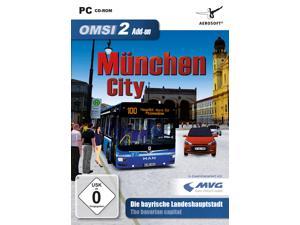

Some buses are equipped with driver's air conditioning. The NG 235 low-floor standard bus has all the standard features including a wheelchair ramp, stroller area, modern interior with cloth seats, kneeling function, hydraulic lifts, IBIS equipment, automatic exterior destination display signs and interior stop displays. The third axle on the second car is a rigid axle and has a strong interior drive. The drive takes place on the third axle, which pushes the entire vehicle - hence the term "articulated pusher". Unlike previous articulated buses, the motor is housed in the rear of the vehicle. The NG 235 is the first articulated bus with this particular construction. It is built with special Austrian construction by the ÖAF-Gräf & Stift and Steyr-Daimler-Puch companies for the Vienna Public Transport. The NG 235 M18 is an 18-meter long, 235 HP, 'low-floor' model articulated bus. The last scheduled run of the GU 240 on the 23A Line took place on April 7, 2006. The second car has an axle that is steered according to the way the articulated joint is angled.Īt the end of 1988, the first 6 cars were put into service. One technical feature of this bus is that the bus is driven by the central axis. (The VÖV is the German insurance standards association.) The bus engine runs on gasoline. The body is similar to the German VÖV standard city buses, and is based on an articulated version of the LU 200 M12. The 240 M18 is an 18-meter long articulated bus with a 240 hp engine under the floor. NG 235, the first low-floor generation of articulated buses in Vienna.GU 240, the last high-floor generation of articulated buses in Vienna.This line is operated exclusively with two different types of articulated buses: In addition, the following routes run on a limited schedule: Kagraner Platz (U) – Hausfeldstraße (S).Kagran (U) – Hirschstetten am Heidjöchl (Hausfeldstraße).A ride on the 23A articulated buses needs about 19 minutes in each direction for the 6.7 km stretch. During morning and afternoon rush hours, it is normal to have more than 700 passengers take this route. The route takes you around the historic center of Hirschstetten and stops at Hausfeldstraße where the S-Bahn S80 (tram) has its terminus.Īs a feeder to the U1 subway line and the suburban train, the 23A is very crowded, especially during weekday rush hours. It then branches off towards Hirschstetten. At the same time the buses were added to the RBL line, the computer-controlled train system.Īt the start of the route, the 23A runs parallel to the 24A parallel until it reaches Kraygasse.

One interesting fact about the period before changes to the bus models were made in 2006 is that the 23A was the only line where the GU 240 model high-floor articulated bus was used exclusively.Īs part of the September 2006 extension of the U1, the 23A line was reduced in Kagraner square and the buses were completely switched to low-floor models. In 2006, the U1 subway line was extended from Kagran Platz, one of the most important hubs in the district for connections to other bus and tram lines and the U1 subway terminus. The original route started in the Kagran center. Like the 24A Line, the route changed over time to adapt to transportation policies. This is now a historic line that was replaced in 2013 by the expansion of the tram network. With this Add-On articulated buses come into play! You dive directly into the action on the 23A Line in the 22nd district of Vienna (Donaustadt).


 0 kommentar(er)
0 kommentar(er)
